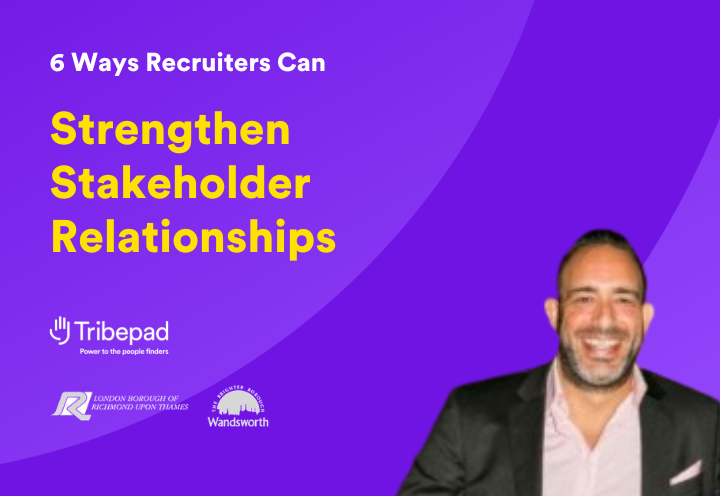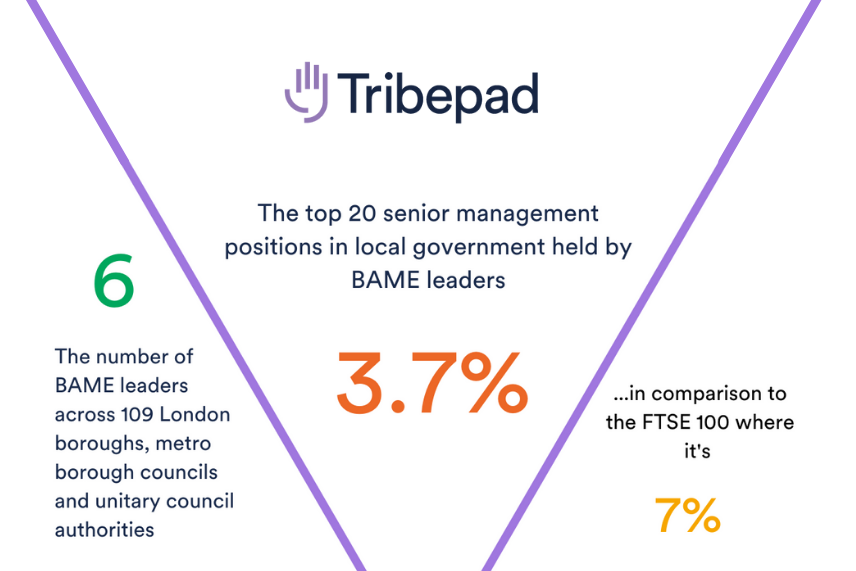63% of hiring managers complain recruiters don’t understand the job they’re recruiting for. And 57% of recruiters say hiring managers simply don’t understand recruitment. These conflicts are all too common. Creating alignment, busting siloes and strengthening stakeholder engagement is critical to effective recruitment delivery.
In May, our Commercial Director Neil Armstrong co-hosted a session at the excellent FIRM virtual event, ‘Re-evaluating, re-assessing and refining resourcing’.
As well as sharing the standout findings from our 2021 research report, ‘Navigating the Hybrid Hiring Era’, Neil was joined by Simon Pollen, Strategic Resourcing and Talent Acquisition Manager at Richmond & Wandsworth Councils.
Simon shared actionable tactics learned on his journey, from “sometimes dinosaur-like” recruitment processes that’ve traditionally been prevalent in the public sector towards “best-in-class”.
Keep reading to learn why Simon believes the master-key is creating better internal engagement with stakeholders – and six actionable tactics to get there.
The master-key: robust internal stakeholder engagement
Recruitment might be owned by your talent acquisition team but you’ll always be firefighting unless you have hiring managers, and people across the organisation, on-side. The buck might stop with you – but success hinges on holistic collaboration.
Public sector or private, that’s a challenge almost every recruitment team is familiar with. Relationships are often strained, with little mutual understanding of one another’s challenges.
(That’s why 63% of hiring managers complain recruiters don’t understand the job they’re recruiting for. And 57% of recruiters say hiring managers simply don’t understand recruitment).
For Simon, dissolving these bottlenecks and creating alignment is the only way to drive true progress: “Better engagement produces confidence, partnership and ultimately, improvements”.
This engagement-led approach has empowered Richmond & Wandsworth Councils to slash agency use and costs against key hard-to-fill roles – and ultimately prove recruitment’s impact. “Showing big savings on these service-head level vacancies gives us the business case to reinvest further into the recruitment team”, Simon says.
Let’s talk about how Simon and the team got there. Here are six tactics that’ve worked for Richmond & Wandsworth to strengthen stakeholder engagement.
1 – Mandatory weekly recruitment workshops
Richmond & Wandsworth now hold mandatory weekly recruitment workshops for anyone who wants to sit on an interview panel. They have around 3500 employees and they’ll see around 500 this calendar year, in weekly batches of around 12.
These engaging, interactive workshops typically last around two hours. They cover:
- How the recruitment team works; who’s involved when
- Wants and needs from both sides
- Why ED&I matters and how recruitment contributes
- How unconscious bias and discrimination seeps in
- The business impact of improvements so far
- Target areas for future process improvements
Simon says, “This is a real opportunity to work very closely with our hiring managers to explain to them, recruitment is a partnership. This is a 360-degree process where we work with each other, towards the best outcomes for everyone”.
2 – Recruitment process walkthrough
Simon and his team have created a one-page recruitment process walkthrough to show hiring managers exactly how recruitment works. It’s a super simple but hugely effective resource, showing the step-by-step process for hiring.
The walkthrough helps hiring managers understand the bigger picture, including what happens when, who’s responsible for what, and optimum timelines for each stage. Each stage also has click-throughs to relevant resources.
By breaking things down and making them clearer, we’re closer as a recruitment function to our hiring managers and our employees, helping them understand what a simple, effective process looks like
3 – Collating educational resources
Another tactic Simon talks about is creating or collating how-to guides and tutorials around topics like interviewing and giving offers. The team also provide (and mandate!) resources like a sample question bank for ED&I, to help hiring managers easily put recruitment priorities into action.
Driving change isn’t just about educating stakeholders around why change matters and what their role should be. It’s also about empowering everyone involved with the resources and training to act.
4 – Gathering and presenting feedback
One of the critical tactics for Simon’s team has been gathering data and compiling compelling quarterly reports to build engagement – and accountability – for recruitment.
We break down different stages of the interview process by directorate. So we show, say, our stats on diversity in Q1 last year compared to Q1 this year, to prove the impact of our initiatives. It’s compelling – it creates ownership
5 – Post-hire evaluation forms
After hiring, Simon’s team send an evaluation form to interviewed candidates, successful candidates and hiring managers. This form creates a constant stream of feedback that they assess, score, and circulate monthly to recruiters and stakeholders.
This simple action creates a feedback loop that keeps everyone aligned around the same priorities. How are we doing on delivering an inclusive experience? How was our candidate experience? Where can we improve next time?
6 – Working in closer partnership with the entire staff community
Simon talks about the need to broaden active participation in recruitment, through building closer partnerships throughout the workforce. That might mean working more closely with the marketing team, for instance, to ensure they’re “putting the right content out to attract people”.
Another example is around ED&I – a major priority for Richmond & Wandsworth. Read more: How local authorities can make progress on ED&I
We work closely with our internal staff support networks – our race equality network, our women’s network – to support our ED&I agenda”, Simon says. “We’ve worked with them to build a go-to list of interview panellists from these backgrounds, for example
Simon also talks about how they’ve started working with hiring managers, directors and the CEO to embed authentic, personalised video content into job adverts. Feedback from candidates has been exceptional.
From transactional to advisory – building an internal agency
Ultimately, strengthening stakeholder engagement isn’t just about changing how hiring managers engage with recruitment. It’s also about changing how recruiters engage with stakeholders; how recruiters are seen and see themselves within the organisation.
This speaks to a degree of culture change that’s needed. It’s far from easy and won’t happen overnight. But when you do, you move away from a purely transactional approach into a more value-add advisory role.
For us it’s about empowering our team to understand that by being more proactive in engaging with internal stakeholders, they can replicate many of the processes agencies use. There are huge cost savings there.
It’s really about getting recruitment advisors to spot opportunities to add value. And instead of rushing to agencies on autopilot, thinking about how we can better work together. Plotting out a personalised approach – more planning, more thinking, and being willing to work differently.
The public sector faces a unique set of recruitment challenges. Discover more about these and how technology can help overcome them on our public sector recruitment page.




